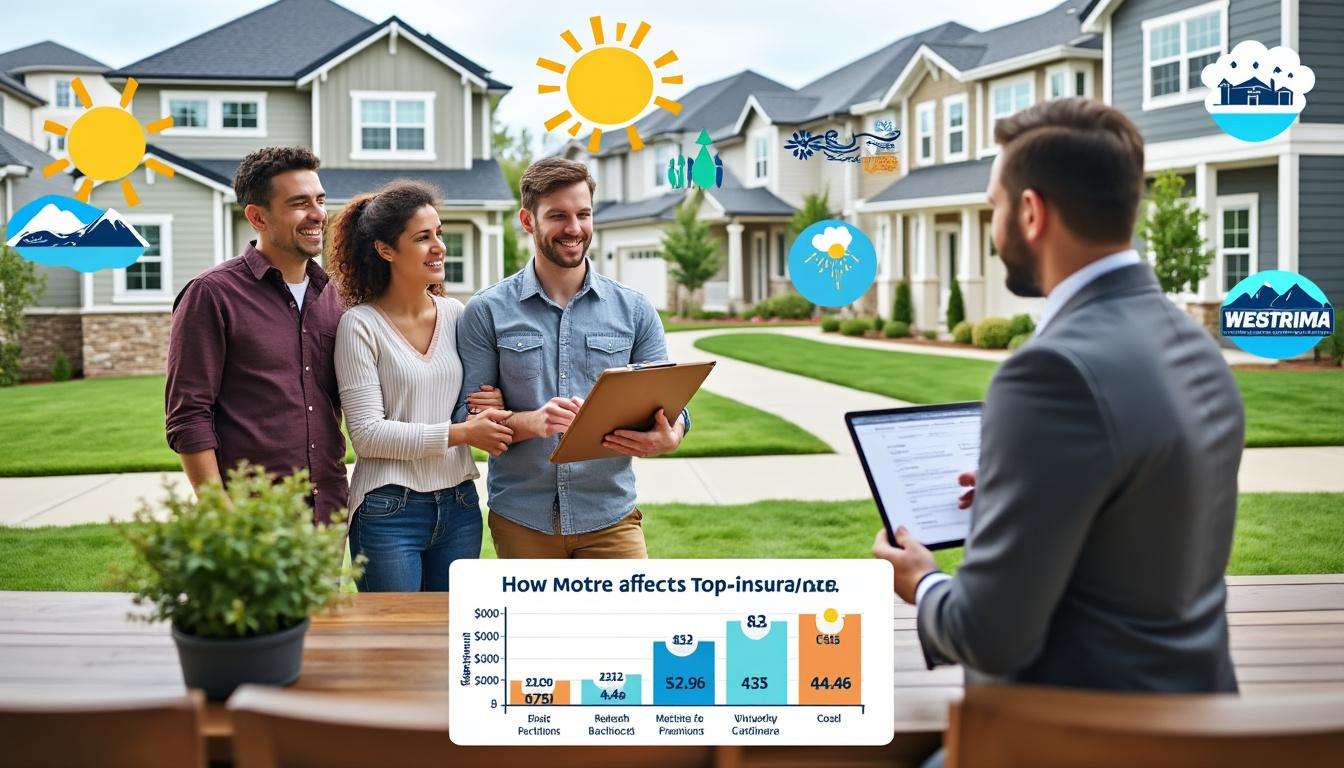Home insurance: How location raises or lowers your premium
Unlocking Savings: How Your Location Influences Home Insurance Costs and Expert Strategies to Lower Your Premiums explores why where you live often matters more than the size of your house when insurers set rates. This guide follows a homeowner, Emma, as she uncovers local risk drivers, compares quotes from providers like State Farm and Geico, and uses tactical moves to cut premiums in 2025.
Home Insurance Costs by Location: What You Should Expect
Location influences premiums through specific, measurable risk factors. Insurers analyze not just the state but the ZIP code block to estimate exposure. Emma discovered her quote varied dramatically simply by moving two miles away.
- Natural disaster exposure — flood, wildfire, hurricane risk can spike rates.
- Local crime rates — theft and vandalism statistics feed underwriting models.
- Construction costs and rebuild values — urban areas often have higher labor and materials costs.
- Proximity to fire stations and hydrants — shorter response times can reduce premiums.
- Historical claims in the ZIP code — frequent claims raise the area risk profile.
Emma’s insight: a detailed local risk check revealed where small upgrades would yield big savings.
How insurers use location data to price risk
Underwriters from companies such as Allstate, Progressive, and Liberty Mutual layer public data, satellite imagery and historical claims to score neighborhoods. That score feeds into your premium calculation within minutes.
Problem: many homeowners assume a single ZIP code equals a single price. Solution: compare precise addresses with multiple insurers.
- Ask for quotes using the exact address, not just the city.
- Check localized risk maps for flood or wildfire zones.
- Request underwriting notes when a quote seems unusually high.
Key insight: address-level pricing means even small moves or mitigation investments can change your premium meaningfully.
Practical Steps to Compare Quotes and Lower Premiums
Shopping is the single easiest way to lower costs — but do it smart. Emma ran quotes with major players like Nationwide, Farmers Insurance, and Travelers to find the best fit for her risk profile and budget.
- Shop multiple insurers — get at least three quotes from different underwriting models.
- Bundle policies — combining home and auto often reduces overall costs.
- Increase your deductible — raise your out-of-pocket to lower the annual premium.
- Ask about discounts — security systems, loyalty discounts, and new-home credits.
Emma’s tactic: she used bundles and a higher deductible to reduce her annual bill while keeping adequate coverage.
Resources and actions to take today
Start by reading targeted guides relevant to your situation. For first-time buyers, tailored checklists help avoid common missteps. For homeowners in high-risk areas, focused advice on zoning and mitigation can be vital.
- Learn what first-time buyers often miss: home insurance for first-time buyers.
- Understand fire zone risks before you commit: homeowners insurance and fire zones.
- Compare bundled savings: home and auto bundle options.
Key insight: targeted reading plus a disciplined quote process delivers measurable savings within weeks.
Case Study — Emma’s ZIP Code Move and Concrete Savings
Emma relocated from a high-claim neighborhood to a nearby area with better emergency services and lower flood exposure. Her initial quotes dropped by nearly 30% after two strategic changes.
Problem: high local claim history and a home near an old creek. Solution: move two miles, add a monitored alarm, and shop competitive quotes.
- Step 1: Verified local claims history and flood maps.
- Step 2: Invested in a home alarm and roof upgrades to qualify for discounts.
- Step 3: Requested quotes from USAA (if eligible), American Family Insurance, and others to compare offers.
Result: Emma secured full replacement-cost coverage while lowering her yearly premium by a significant margin.
Key insight: small location shifts combined with targeted mitigation unlock big savings quickly.
When local risks become claims problems
Regions with frequent weather extremes or systemic issues can lead to denials or disputes. For instance, claim denial patterns in some states have driven homeowners to file appeals or seek public adjusters.
- If you face denials, review guidance like Florida claim denial resources — process and documentation matter.
- Document pre-existing issues and post-event repairs carefully.
- Understand what your policy excludes before disaster strikes.
Key insight: proactive documentation and understanding exclusions reduce the risk of costly claim outcomes.
What to Watch in 2025: Market Shifts That Affect Rates
In 2025, insurers are refining models with more granular data sources — satellite imagery, AI-driven catastrophe models, and local construction cost indices. This is changing how providers like Allstate and Progressive price risk.
- Micro-pricing — address-level underwriting becomes standard.
- Climate-driven re-underwriting — insurers may non-renew in high-exposure zones.
- Regulatory changes — state-level rules can alter availability and price caps.
Emma kept an eye on top carrier ratings for 2025 to ensure stability; resources such as the top homeowners insurance 2025 roundup were invaluable.
Key insight: staying informed about model changes and insurer behavior helps you anticipate and adapt to rate shifts.
Mitigation improvements that insurers reward
Investments in resilience often lead to immediate discounts. Simple upgrades can signal lower loss expectancy to underwriters and reduce long-term premium volatility.
- Install a monitored security system and document installation for discounts.
- Upgrade roofing materials, reinforce windows, and clear vegetation in wildfire-prone areas.
- Consider flood mitigation like elevation or barriers where feasible.
Practical tip: check resources on water-related coverage and mitigation before spending: water damage and home insurance.
Key insight: targeted resilience upgrades often pay back through lower premiums and fewer out-of-pocket losses.
Checklist: Quick Actions to Reduce Your Premiums
Use this checklist to prioritize savings. Emma followed a similar sequence and reduced her premium while improving protection.
- Compare 3+ quotes — include regional carriers and national names like Geico and Nationwide.
- Bundle policies — verify bundle savings via a trusted review like auto and home insurance reviews.
- Document upgrades — keep receipts and contractor statements for mitigation discounts.
- Review coverage limits — ensure dwelling coverage reflects current rebuild costs, not purchase price.
- Ask about loyalty and multi-policy discounts — rates and credits vary by carrier.
Key insight: a disciplined checklist plus timely quotes is often more effective than hoping for rate decreases.
Location can shift premiums substantially; small ZIP code differences may alter rates by double-digit percentages depending on local risk factors like flood, wildfire, and crime. Always obtain address-level quotes to capture true pricing.
Which insurers offer the best discounts for mitigation upgrades?
Many major insurers such as State Farm, Allstate, and Travelers provide credits for alarms, updated roofs, and plumbing upgrades. Eligibility and discount sizes vary, so request a list of available credits when you get quotes.
Should I bundle home and auto policies to save money?
Bundling often yields meaningful savings and simplifies claims handling. Compare bundled offers from providers like Nationwide and Geico, and read reviews such as those on InsuranceProFinder to weigh total savings against service quality.
What if my insurer denies a claim after a disaster?
Document the denial, gather supporting evidence, and consider escalation steps: internal appeal, state insurance regulator complaint, or hiring a public adjuster. Resources on claim denials can guide you through the process.


